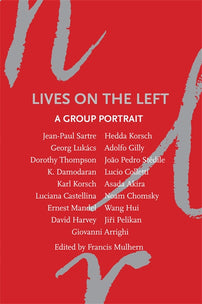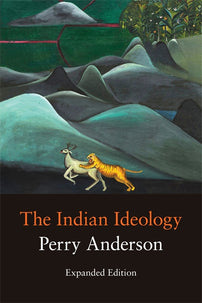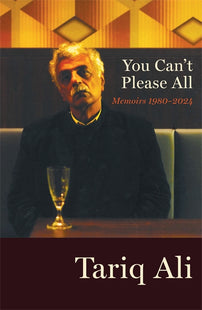Interview with K. Damodaran
Tariq Ali interviews K. Damodaran, an early leader of the Communist Party in India

In 1975, I delivered a set of lectures at the Jawaharlal Nehru University in Delhi, some months before the Congress government under Indira Gandhi, declared a State of Emergency. The Communist Party of India supported her. The Communist Party of India (Marxist) was strongly opposed. The pro-Maoist faction carried on with their ‘armed struggle.’ At JNU I met K. Damodaran, an early leader of the CPI from Kerala now engaged in research. After several private talks, I interviewed him at length for the New Left Review [1/199/]. Francis Mulhern included it in his edited collection, ‘Lives on the Left’, published by Verso in 2011.
The interview was subsequently translated into several Indian languages and was reprinted only a few years ago when I was given a public lecture in Trivandrum. Many young Keralans said to me it was their ‘favorite history’ of the CPI. The editor of the NLR (Robin Blackburn) had cut a few pages, purely for space reasons. He found them in his archives only recently. So, for the record and for the first time, we have the complete interview.
In my NLR introduction to Damodoran, I concluded thus:
This interview with Damodaran was conducted shortly before the declaration of the State of Emergency. Nothing that has happened subsequently does anything but confirm his bleak and pessimistic balance sheet of Indian Communism. Yet the necessary task of identifying the failures and mistakes of the past will assist the Indian Left to meet its historic responsibilities in the future. The reader will also discover that this personal memoir by an Indian Communist gives many insights into the development of the international movement of which he was a part and is confident that the forces accumulated in the past by Indian Communism could be re-grouped and recuperated by a genuinely revolutionary strategy in the sub-continent.
Like its European counterparts, Indian Communism, too, has largely collapsed. The Damodaran interview remains a monument to its past. The addition published below completes the text.
Tariq Ali,
April 2025.
TA: In what period did you become politically active? What was the political atmosphere of the time and in what circumstances did you become radicalized and later a member of the Communist Party?
KD: My first overt political activity took place immediately after the First World War, when I was six years old. A demonstration had been organized by the teachers at our school and others, and I took part in it. Its purpose was to show the support of the people for the King and empire. It was a demonstration of loyalty. This was the political atmosphere which prevailed in the educational institutions of British India at the time.
However, at a later stage of my school life, when I was a high school student, there was a wave of agitation against the Simon Commission Report and many school and college students took part. I was one of them. It was the first anti-imperialist agitation in which I participated. That was how my real involvement in politics began. I then started to read newspapers and political pamphlets and was soon attracted to certain religious movements led by men like Swami Vivekenanda. What they offered was not just religion. They combined it with the intense nationalism and continually urged the youth to undertake militant actions. They even referred to the need for socialism, the need to end all poverty and many other radical slogans. As a result, they had a certain attraction for the Indian youth. From here the move towards Gandhi’s movement was not too difficult.
From 1930 to 1932, I was a college student in Calicut (Kerala) and I became one of the organizers of the students union from which base we organized a Kerala Students Union of which I was elected the secretary. It was from this position that we organized the students to participate in the Civil Disobedience Movement launched by Gandhi against the British. Our main work was to illegally publish the Congress bulletins which had been banned by the authorities at the time. Our student organization was entrusted with the task of establishing a clandestine printing apparatus. We set up shop in the town of Mahe, then under French suzerainty and began to publish nationalist literature. This activity, which in the context of the overall struggle that was forming, was relatively minor, but it taught me the importance and necessity of organization and discipline. Even in this period (1930-32) there was some conflict between the local Congress leadership and the student activities. We wanted more action and student involvement in the struggle, which we felt should be escalated. The Congress leaders were extremely cautious and were constantly attempting to sidetrack our demands and even keeping us out of the mass work by counterposing it to the clandestine publishing activities we were carrying out and for which they, as a matter of interest, took all the credit.
In 1931 we organized a conference of Kerala students to coincide with a political conference which had been organized by the Congress. As you can imagine, the political discussions which took place at the student conference were more radical than the plans of the Congress leaders. Soon after the Conference a person made a tremendous impression on me. He was Kiran Das. Both he and his brother Yatindra Das (who died in jail after a prolonged hunger-strike) were terrorists. Kiran Das organized a clandestine meeting with the most advanced students and his main contribution there was to give us detailed instructions on how to make bombs. It was in such stark contrast to the Gandhian line of the Congress that several of us were extremely impressed. In his open political speech at the Calicut beach, he stressed the heroism of the Mophahs, the Muslim peasants in Kerala, who organized an armed uprising against the British in the twenties, the memory of which was still fresh in our minds. Das told us to follow their example and drive the British into the sea. His speech was greeted with tremendous applause and enthusiasm and accordingly early the next morning he was arrested.
If we could just digress for a minute: why do you think that terrorism in India did not become a mass current? Given the straight jacket of Gandhian pacifism, I would have thought that there was considerable scope for terrorism to become a pole of attraction and not just in the Punjab and Bengal. And yet, after the British executed the great terrorist leader Bhagat Singh and two of his comrades, the movement just collapsed.
For one thing, you must understand that Gandhi’s prestige throughout the country was enormous. I remember after Bhagat Singh’s execution, the joint secretary of the Kerala Students Union, a colleague of mine, made a ferocious speech attacking Gandhi. He claimed that Gandhi was responsible for the murder of Bhagat Singh because he had not lifted a finger to save the latter and his comrades from the gallows. I was still confused at that time and in my speech, I defended Bhagat Singh and Gandhi at the same time. To a certain extent revolutionary terrorism did become a pole of attraction and did undoubtedly create or rather stimulate anti-imperialist consciousness. But the long-term effects of terrorism are limited because of the nature of terrorism itself. A large bulk of the terrorists later joined the Communist Party, but at the time when they were carrying out their actions, there was no revolutionary party which could utilize them by mobilizing the masses. P. Krishna Pilliai, the founder of the Communist movement in Kerala, himself had terrorist leanings in his youth and was a great admirer of Chandrashekhar Azad, a famous revolutionary terrorist. The other important point worth remembering is that Bhagat Singh even before his arrest in 1929 had become a Marxist. He had read Capital and some other Communist literature, and his enthusiasm for the work knew no bounds. But he felt that before abandoning terrorism one last action had to be carried out. Even in prison he was offered a chance to recant and appeal for mercy, but he refused declaring that the only appeal he would make to the Viceroy would be to plead that he be shot by a firing squad of British soldiers rather than hanged. At the same time neither Gandhi nor the Congress leaders seriously attempted to save the three terrorist leaders. They knew that if released Bhagat Singh in particular would have been a fierce and popular opponent and with mass support. The British executed some of the finest potential leaders of Indian communism. In doing so, they demonstrated the same class instinct which led them to murder James Connolly and the other leaders of the Easter Rising in Dublin in 1916. An analogy between themselves and the Irish nationalists was often made by the revolutionary terrorists.
To continue with what we were discussing: you, in other words, remained a radical nationalist till the Thirties?
Yes. Certainly until 1932 I was an ardent nationalist and supporter of the Congress. I wore Khadi, learnt Hindi and shouted “Mahatame Gandhi ki jai” (Long live Mahatma Gandhi) on the street demonstrations.[1] Scientific socialism had not entered my consciousness. That year I was arrested and sentenced to remain in jail for two years. Because I came from a middle landlord family, the prosecutors attempted to give me a ‘B’ class i.e. some privileges in jail, which, apart from everything else, would have isolated me from my co-accused and the mainstream of nationalist political prisoners. So, I threatened to go on hunger strike unless I was given a ‘C’ class status with the other prisoners. I won. It was here that my real political education began. It was in prison that I first saw the Communist Manifesto and read it as well as some works by Kropotkin. But I did not become a Communist at that time. In fact, I translated some anarchist literature and Gandhi’s Anasaktiyoga into Malayalam. There were heated debates between socialists, Gandhians, anarchists, terrorists and others. Even to listen to these debates was an education. For a whole period, I could do no more than listen, I was partly Gandhian, partly anarchist, partly socialist, but gradually I began moving towards socialism. In 1931 a book had been published in Malayalam called The Fire and the Spark; “fire” was Lenin and “spark” was Trotsky. It was written by Kesar Dev, a Kerala writer. I read it and it made a big impression on me. Stalin was not even mentioned. He was at that stage completely unknown to us. In the years that followed two other books appeared in the Calicut Municipal Library and we devoured both: John Reed’s Ten Days That Shook the World and Trotsky’s History of the Russian Revolution. The person who asked me to read these books and the works of Lenin and Trotsky were extremely popular figures. In retrospect it does appear a bit odd that Trotsky was still being read by Indian Communists in the thirties, but it is nonetheless a fact. E.M.S. Namboodripad, one of the leaders of Kerala and later Indian Communism, wrote a book while he was in prison (from 1932 to 1933) called 1917. Written in Malayalam, it was published as soon as he was released. In it he openly acknowledges his debt to Trotsky’s history, writing that if his small pamphlet does nothing else but encourage readers to read Trotsky then he would consider himself satisfied. This pamphlet was published in 1934.
Apart from my political education in the prison-university, another factor which played a vital role in drawing me towards communism was the Depression. While the whole capitalist world was reeling from the effects of the 1929 slump, the Soviet Union did not experience the consequences because of its socialized economy. In a country like India where the Depression made conditions even worse, the example of the USSR was even more striking. At the same time the Congress, instead of mobilizing the workers and peasants on demands that related to their social needs, appeared as politically bankrupt. Most of its first- and second-rank leaders only appeared in the Congressional office on Sundays (as if for leisure) and several people decided that a Sunday Congress was useless as far as the masses were concerned. The civil disobedience launched by Gandhi had fizzled out, in our view, not because the struggle for independence was too limited, but because of the inability of the Congress to mobilize the workers and the peasants. So, together with other Congress militants, I began to participate in the struggles of the masses including the struggle for trade-unionism. The first strike we led under Krishna Pillai was that of the tile-workers. It lasted for two months and was finally broken by the massive use of blacklegs and our inability to move beyond Gandhism. Our pacifism towards the blacklegs resulted in the defeat of the strike. All these facts were constantly propelling me leftwards, but there was still no organized communist party in Kerala and, for a period, our whole group of semi-Marxists, socialist Congresses, etc., joined the Congress Socialist Party, which was formed in 1934. During all this involvement in politics I had neglected my university education and saw no need for it, but Krishna Pillai censured me heavily and insisted that I complete my education. In a country where there is mass illiteracy, every graduate is an asset, I was told. So, I went for my higher studies to Benares and joined the Kashi Vidya Pith. It was here, in 1935, that I became a member of the Communist Party of India. I was approached by the local communist leader after he had heard me heckle an extremely demagogic Congress leader in a mass meeting and win the support of the audience. He asked me to join the party and left a whole bundle of literature for me to read. I promised to think about it. That whole night I spent reading and thinking and finally decided to join. It was a turning point in my life. We were going to change the world, I thought. The Communist Party was illegal at that time, and we had to function clandestinely, but from then on, I became a loyal supporter of whatever appeared in the party press as all good communists were meant to be. The phase of political confusion, at any rate, was over. There was no more hanging in between Gandhi and the Socialists.
Read K. Damodaran's Memoir of an Indian Communist in the New Left Review (I/93/Sept/Oct 1975) here
[1] Khadi is a hang-spun, woven cloth. During the 1930s Gandhi promoted the fabric as a symbol of India’s struggle for freedom.



